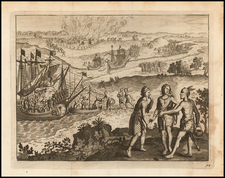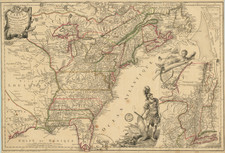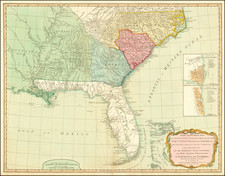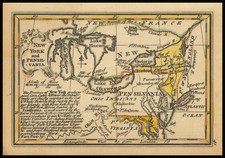Fine set of 28 images accompany the report of William Turnbull, Capt., issued in conjunction with his survey of the Potomac Aqueduct, conducted between 1832 and 1838.
William Turnbull (1800-1857) was born in Philadelphia and graduated from the United States Military Academy in 1819. Turnbull entered the army as 2d lieutenant in the artillery. After serving in garrison at Fort McHenry for a year he was on topographical duty until 1832, being named assistant topographical engineer in 1832, with the brevet of captain.
From 1832 until 1843, Turnbull was superintending topographical engineer of the construction of the Potomac aqueduct. This work, one of the earliest of the important undertakings of American engineers, gave Colonel Turnbull a high rank among his professional associates. The piers of the aqueduct were founded by coffer-dams on rock, sometimes covered by twenty feet of mud, and nearly forty feet below the water surface.
In connection with this work, Turnbull published a government report entitled "On the Survey and Construction of the Potomac Aqueduct," with twenty-one plates (Washington, 1838).
Turnbull was made a Major, 7 July, 1838, and placed in charge of the repairs of the Potomac (long) bridge in 1841-43. Subsequently he had charge of Lake Ontario harbor improvement, the extension of Buffalo harbor, and inspection of harbor improvements on Lake Champlain, Lake Ontario, and Lake Erie.
In the war with Mexico he was topographical engineer of the army under General Winfield Scott, and was engaged in the siege of Vera Cruz, the battles of Cerro Gordo, Pedregal, and Churubusco, and the operations that ended with the capture of the city of Mexico. His services gained for him the brevets of lieutenant-colonel and colonel. During 1848-49, was charged with the construction of the New Orleans custom-house. Turnbull was assistant in the Topographical Bureau at Washington, D. C., in 1850-52 and 1853-54, where he examined the practicability of bridging the Susquehanna River at Havre de Grace, and the expediency of an additional canal around the Falls of Ohio. He was light-house engineer for Oswego harbor, New York, in 1853-55, in charge of harbor improvements of Lake Champlain, Lake Ontario, and the eastern part of Lake Erie in 1853-56, and of the improvement of Cape Fear river, North Carolina, in 1856-57.









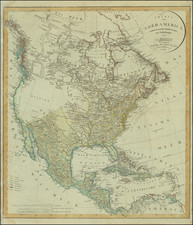
![(Civil War) Stanford's Map of the Seat of War in America. Sheet I. [Mid-Atlantic States]](https://storage.googleapis.com/raremaps/img/small/96007.jpg)
